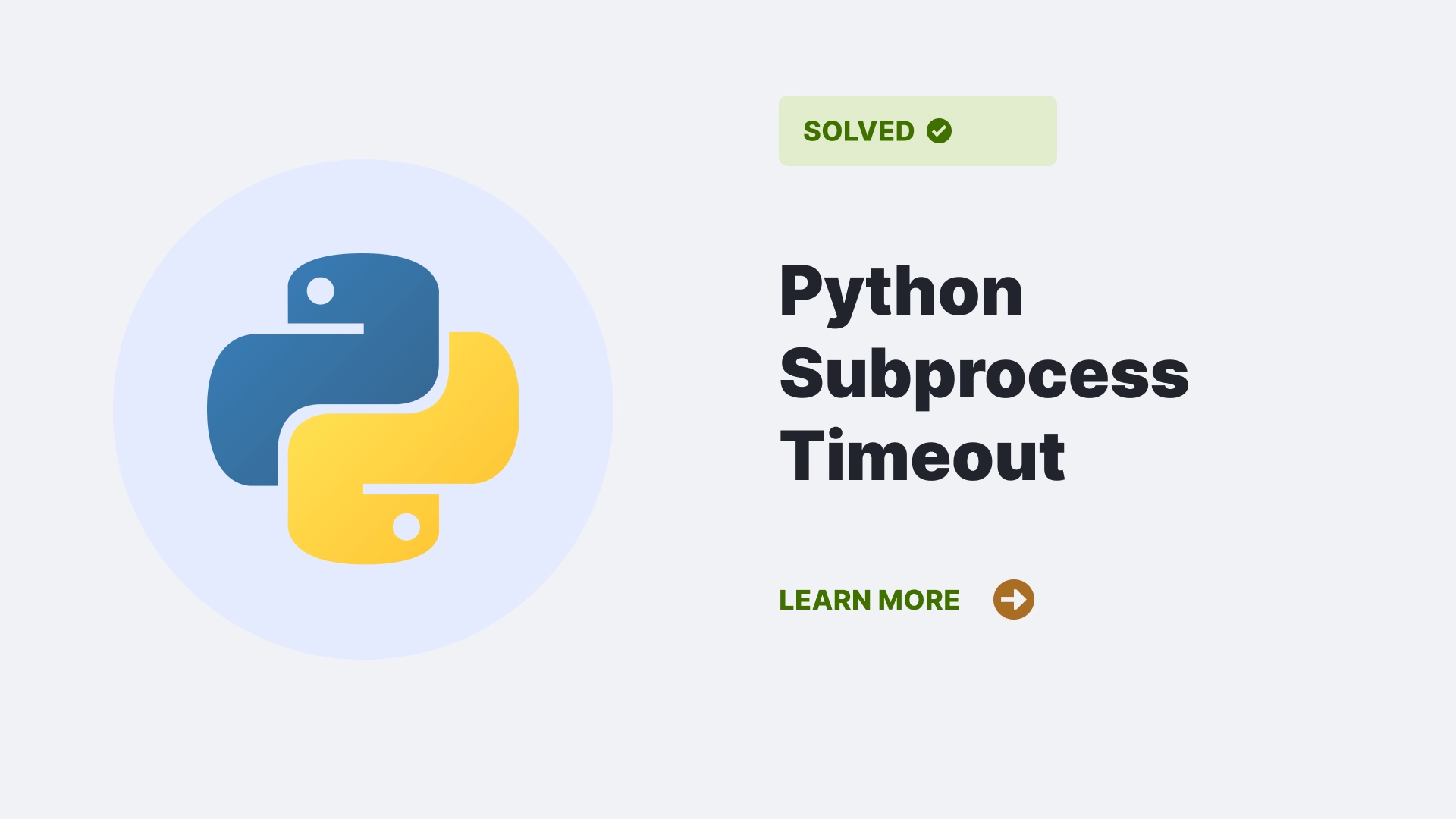When working with the subprocess module in Python, you can set a timeout for subprocess operations to control their execution duration.
The Python subprocess timeout, provides a way to spawn new processes, interact with their input/output/error streams, and control their execution.
Contents
Important features of Python Subprocess Timeout
- To set timeout for the subprocess function, use the subprocess.run() function or subprocess.Popen class to execute the subprocess.
- Set the timeout parameter to the desired duration in seconds. This specifies the maximum allowed execution time for the subprocess.
- If the subprocess completes within the timeout, the code continues executing normally.
- If the subprocess exceeds the timeout, a subprocess.TimeoutExpired exception is raised.
- Catch the subprocess.TimeoutExpired exception and handle it accordingly. You can terminate the subprocess, log an error, or take alternative actions.
- Perform any necessary cleanup tasks after the subprocess completes or is terminated.
- Consider capturing and processing the subprocess output and handling any errors that may occur.
Example of Python subprocess timeout
In this example, the subprocess.run() function is used to execute a command with specified arguments. The timeout parameter is set to 5 seconds, indicating the maximum allowed duration for the subprocess execution. If the subprocess completes within the timeout duration, the code proceeds normally. However, if the subprocess exceeds the timeout, a subprocess.TimeoutExpired exception is raised.
Syntax:
import subprocess
try:
completed_process = subprocess.run(['command', 'arg1', 'arg2'], timeout=5)
# Replace ['command', 'arg1', 'arg2'] with your actual command and arguments
# Process completed within the timeout
print("Subprocess completed successfully.")
except subprocess.TimeoutExpired:
# Process took longer than the specified timeout
print("Timeout expired. Subprocess execution was terminated.")You can catch this exception and handle it as needed, such as printing an error message or taking any necessary actions. Make sure to replace ['command', 'arg1', 'arg2'] with the actual command and arguments you want to execute using the subprocess module.
Conditions in which the Python subprocess timeout occur
When working with the Python subprocess module and setting a timeout for subprocess operations, there are several scenarios that can arise. Here are some common scenarios related to subprocess timeouts in Python:
- Successful execution within the timeout: In this scenario, the subprocess completes its execution within the specified timeout duration. The main program continues execution after the subprocess finishes, and you can process the results or take further actions based on the subprocess output.
- Timeout expired: If the subprocess execution exceeds the specified timeout, a subprocess.TimeoutExpired exception is raised. This indicates that the subprocess did not complete within the allowed time limit. You can catch this exception and handle it accordingly, which might involve terminating the subprocess, logging an error, or taking alternative steps.
- Handling subprocess termination on timeout: When a timeout occurs, you may want to terminate the subprocess explicitly to ensure it doesn’t keep running indefinitely. You can use the
subprocess.Popen.terminate()method or other suitable mechanisms to forcefully terminate the subprocess after the timeout expires. - Subprocess cleanup: After the subprocess is terminated or completes successfully within the timeout, it’s important to perform necessary cleanup tasks. This can involve closing file descriptors, releasing system resources, or performing any cleanup steps specific to your subprocess operation.
- Handling subprocess errors and output: Depending on the nature of your subprocess, it might generate error messages or produce output that you need to handle. You can capture the subprocess output using the
subprocess.PIPEoption and process it as needed. In case of subprocess errors, you can inspect the return code or any error messages to handle them appropriately.
It’s essential to consider these scenarios when working with subprocess timeouts in Python and design your code to handle them effectively based on your specific requirements and use case.
Glossary
What is subprocess?
In Python, a subprocess refers to a separate, independent process that is spawned or launched from within a Python script. It allows to execute external programs or system commands and interact with them programmatically.
The subprocess module in Python provides a way to create and manage subprocesses. It offers functions and classes that enable you to spawn new processes, communicate with them, and control their execution.
What is Python subprocess timeout return code
In Python’s subprocess module, when we use the timeout parameter to limit the execution time of a subprocess, the return code of the subprocess depends on whether subprocess completes within timeout or subprocess exceeds timeout and is terminated.
The behavior of the return code can depend on various factors, so it’s recommended to refer to the documentation or test the behavior in the specific environment to ensure accurate handling of return codes when using a timeout with subprocess.
Conclusion
Note that the timeout parameter was introduced in Python 3.3. If you’re using an older version of Python, you can consider using the subprocess.Popen class along with the communicate() method and a Timer to achieve similar timeout functionality. It’s essential to consider these scenarios when working with subprocess timeouts in Python and design your code to handle them effectively based on your specific requirements and use case.
References
- Python Docs – Subprocess
Follow PythonClear for more.

